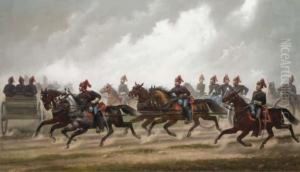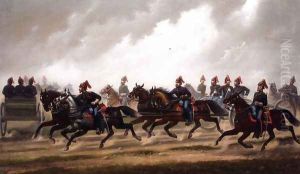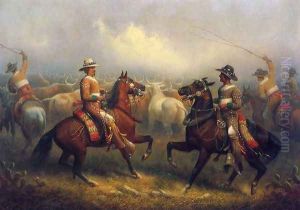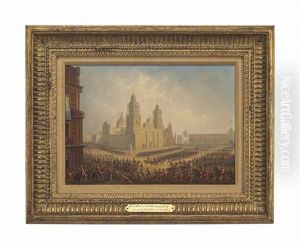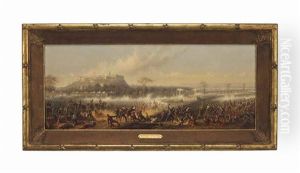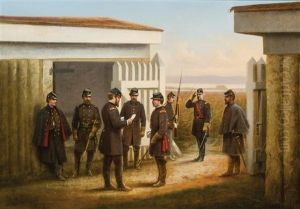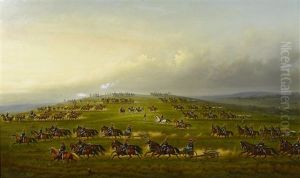James Walker Paintings
James Walker was an English painter known for his detailed maritime and historical scenes. Born in 1819, Walker spent much of his life depicting the power and drama of the sea, an element that has fascinated and challenged humanity for centuries. His works often captured naval battles, merchant ships, and the life of sailors with a vividness and accuracy that spoke of a deep understanding and appreciation of the sea.
Walker was not just a painter; he was a storyteller who used his canvas to convey the tales of bravery, adventure, and sometimes tragedy that the ocean conjures. Throughout the 19th century, as Britain's naval power and maritime commerce were at their peak, Walker's works resonated with the public and were highly sought after. They provided a glimpse into a world that was crucial to the British Empire's wealth and power, yet was foreign and inaccessible to the average citizen.
His technique, characterized by attention to detail and the dynamic use of light and shadow, helped to elevate maritime art beyond mere representation. Walker was able to capture the mood of the sea, its unpredictable nature, and the human endeavor to navigate its waters. His paintings are not only valuable for their artistic merit but also as historical documents that offer insight into the era's naval technology, ship design, and the broader cultural significance of the sea.
James Walker's legacy is preserved in the collections of maritime museums and galleries around the world. His death in 1889 marked the end of a career that had significantly contributed to the genre of maritime painting, influencing not only contemporaries but also future generations of artists. Walker's work remains a testament to the skill, imagination, and profound respect for the sea that defined his life and art.







